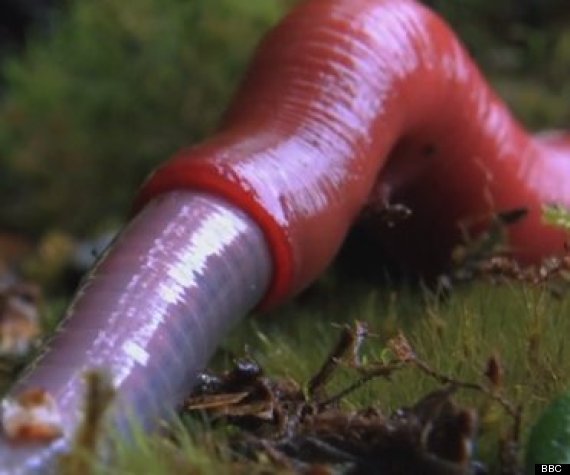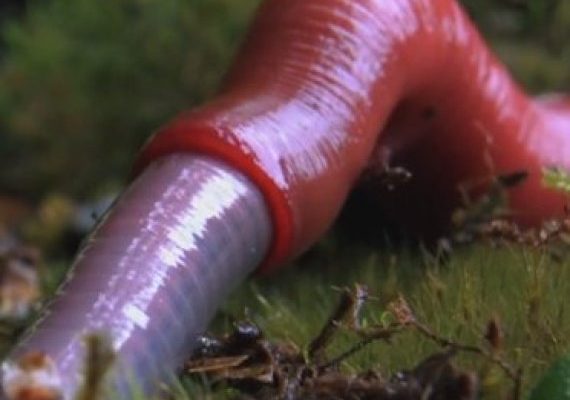
When thinking about velvet worms, it’s easy to picture something out of a sci-fi movie. Their soft, velvety bodies are segmented, often bright in color, and they have a unique way of hunting that feels like something out of nature’s playbook. After capturing their prey—typically small insects—these creatures utilize a method of digestion that’s as fascinating as it is effective. So, let’s break this down, step by step, and unveil the secrets behind how velvet worms digest their meals.
Understanding Velvet Worms and Their Hunting Techniques
Velvet worms belong to a group called Onychophora, a term that might sound complex, but it essentially means “claw bearer.” These creatures have a distinct body structure with a soft outer layer that helps them move gracefully through their damp habitats. Their hunting technique is something to behold. They use a unique method to catch prey, which involves shooting out a sticky slime to ensnare their victims.
Think of their hunting strategy like a spider web—but much more direct. Velvet worms have specialized glands that allow them to expel this adhesive substance, which quickly immobilizes unsuspecting insects. Once the prey is caught, the velvet worm doesn’t waste any time. This rapid action is crucial because many of their potential meals could easily escape if given the chance.
So, now that they’ve caught their prey, what comes next? Let’s explore the digestion process that transforms this captured insect into nutrients.
How Velvet Worms Begin Digestion
Once a velvet worm captures its prey, the first step in digestion begins externally. Yes, you heard that right! Instead of consuming food whole like many animals do, velvet worms start the process by injecting digestive enzymes directly into their meals. It’s like they carry their own chefs wherever they go.
This injection of enzymes breaks down the prey’s internal structure, essentially turning it into a sort of nutrient-rich soup. Imagine dousing a solid piece of food in a tasty sauce that then makes it much easier to sip through a straw—that’s the essence of what velvet worms do! They allow their enzymes to do the heavy lifting before they start sucking up the digestible material.
This method is particularly handy because it not only allows them to absorb nutrients but also means they can feed on prey much larger than themselves. With their specialized mouthparts, they can slurp up this nutrient-rich soup, maximizing the value of each meal.
Digestive System of Velvet Worms
So, what does the velvet worm’s digestive system look like? It’s pretty unique! Their system is quite simple compared to ours, which can make things easier to understand. Once the enzymes break down the prey, the resulting liquid enters the midgut, where further absorption takes place.
In the midgut, the softened nutrients make their way through specialized cells that absorb necessary compounds. It’s like the velvet worm’s personal nutrition factory, efficiently extracting every bit of goodness. After the nutrients are absorbed, the leftover indigestible parts are excreted, keeping their bodies clean and ready for the next meal.
Here’s the thing: this method of external digestion isn’t just about convenience; it’s a way for these worms to thrive in their environment. Their habitats often host various potential meals, and this approach allows them to take full advantage of whatever they can catch.
Why This Digestion Method Matters
You might be wondering why all this matters in the grand scheme of things. Well, the digestion method of velvet worms provides them with several advantages that not only aid in their survival but also influence their ecosystem. By efficiently breaking down their prey outside of their bodies, they play a vital role in nutrient cycling in their habitats.
This means that velvet worms contribute to the health of the forest floor by helping to decompose organic matter and returning nutrients to the soil. In turn, this supports plant growth and promotes biodiversity. You could say that velvet worms are unsung heroes in their ecosystems!
Moreover, understanding how these creatures digest their prey can offer insights into the evolution of digestive systems across different species. It’s a reminder of how diverse nature can be and how various methods of survival can exist.
Comparing Velvet Worms with Other Predators
When you think about predators, you might picture big cats or birds of prey that directly consume their meals. Velvet worms, however, take a completely different approach. Their external digestion sets them apart not just from mammals but also from many other invertebrates.
For example, spiders also inject enzymes to help break down their prey, but they typically consume their meals whole afterward. Velvet worms, by contrast, prefer to liquefy their food first. This distinction highlights the incredible diversity in the way life has adapted to capture and consume food.
Another interesting comparison is with animals like frogs, which use their tongues to capture prey before swallowing it whole. Each of these predators has evolved unique strategies tailored to their specific environments and dietary needs.
The Role of Velvet Worms in Their Ecosystem
You might not think of velvet worms as particularly impactful creatures, but they’re woven into the fabric of their ecosystems. By breaking down organic material and assisting in nutrient recycling, they play a crucial role in maintaining healthy forest ecosystems.
Their presence benefits other species, too. Many small animals depend on the nutrients released into the soil for their survival. In a way, velvet worms facilitate the circle of life, moving nutrients from one point to another and supporting a variety of other organisms.
Additionally, velvet worms themselves are prey for larger animals, including birds and mammals. This places them in the food chain, making their existence vital for other species as they contribute to biodiversity.
Challenges Facing Velvet Worms
Despite their fascinating biology and importance in their ecosystems, velvet worms face several challenges. Habitat loss is a major concern, especially as forests are cleared for agriculture or urban development. Without their natural habitats, these unique creatures struggle to survive and reproduce.
Climate change can also impact the environments where they thrive. Velvet worms require moist conditions, so changes in rainfall patterns can disrupt their habitats. These shifts not only threaten their survival but can also alter the delicate balance of their ecosystems.
Conservation efforts are essential to protect these remarkable beings. Understanding their role in the ecosystem is the first step towards ensuring that velvet worms continue to exist on our planet.
In conclusion, the world of velvet worms is a captivating blend of biology and ecology. Their unique method of digesting prey after capture showcases the wonders of evolution and adaptation in nature. By learning about these creatures, we gain insight into the complex web of life that surrounds us. As we navigate through the challenges they face, we can appreciate the importance of conserving their habitats and supporting biodiversity for future generations.

